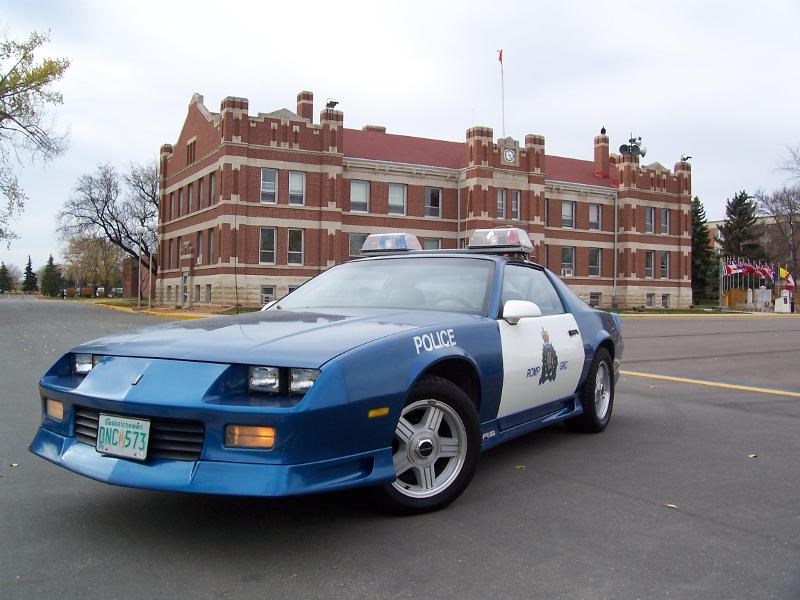1917: "RNWMP" plate on front grill centred between headlights
1944: Commissioner Wood ordered that Force vehicles be marked with the letters R.C.M.P. on both front door panels and the vehicle code number on the trunk.
1951: RCMP takes over British Columbia Police Force and with it comes a fleet of police cars that all have white doors. This two-tone car design would last with the force until the early 1990s.
1953: A/Cmmr. LaRiviere directs to the C.O.s of Divisions B, D, E, F, H, J, K that all Highway Patrol cars should have their front doors painted white with the letters R.C.M.P. inserted in black. The letters were to be no more than four inches in height and to be placed in a curvature rather than straight across. The directive advises that RCMP crests will not be available for some time. Other than traffic cars, which were to be black with white doors, no specific colour was required.
1954: The letters R.C.M.P. are dropped in favour of a single RCMP crest
1965: Inspector Hurlow writes that "between 1944 and present, early instructions indicated 2-inch RCMP letters on each door and the vehicle code number on the trunk. Later the letters were changed to 1-inch and then to 1 and a half inch and in 1947 letters were required on the rear of each vehicle. In 1948, experiments were conducted using demountable type signs using 3 and half inch by 5 inch letters but was found unsuitable. In 1951 several "E" Division Highway Patrol cars were equipped with white doors and 6 inch RCMP letters. In 1953 this method was adopted for traffic cars throughout the Force. In 1954 the letters were reduced to 4 inches in height. Hurlow also recommended a white front door with a white reflectorized shield with the crest of the Force centred on the shield and RCMP in black 4 inch letters.
1971: Approval is granted to have the roofs painted white of all dog wagons, vans and panel trucks that are used for prisoner transport.
1972: New bilingual shield decals are distributed. There were some problems encountered that apparently did not get resolved until the following year.
1973: New RCMP - GRC decals to replace the shield are issued
1974: All new vehicles are delivered in RCMP "Centennial" blue and white
1976 to 1990s: All new vehicles are delivered in a new shade variation of the RCMP "Centennial" blue and white
1994: The RCMP Corporate Identity Program re-designs the police vehicle to consist of a white vehicle with decals of the crest and the words RCMP GRC. This was done due to many reasons, due to the cost saving initiatives in using a single-colour vehicle, as well as environmental factors and the resale value of the vehicles.
FUN FACT:
What was the first Unit in the RCMP to have air conditioning as standard equipment in their vehicles?
A) Highway Patrol
B) Surveillance
C) Police Dog Service
D) Forensic Identification
E) General Duty
Answer: C - It was for the Police Dogs (Not the handler's comfort). Dogs see more with their nose then their eyes. If the dog is hot, they will pant to cool themselves which can effect their ability to track.
-- Courtesy




